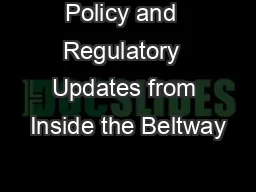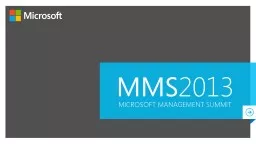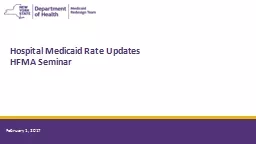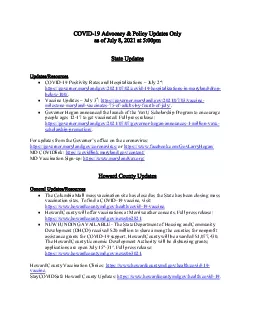PPT-Policy and Regulatory Updates from Inside the Beltway
Author : giovanna-bartolotta | Published Date : 2018-10-24
Diane Calmus JD Government Affairs and Policy Manager 2 306 Historically significant election Never has there been a President with no political or military experience
Presentation Embed Code
Download Presentation
Download Presentation The PPT/PDF document "Policy and Regulatory Updates from Ins..." is the property of its rightful owner. Permission is granted to download and print the materials on this website for personal, non-commercial use only, and to display it on your personal computer provided you do not modify the materials and that you retain all copyright notices contained in the materials. By downloading content from our website, you accept the terms of this agreement.
Policy and Regulatory Updates from Inside the Beltway: Transcript
Download Rules Of Document
"Policy and Regulatory Updates from Inside the Beltway"The content belongs to its owner. You may download and print it for personal use, without modification, and keep all copyright notices. By downloading, you agree to these terms.
Related Documents














